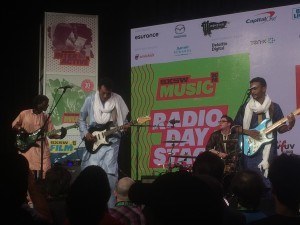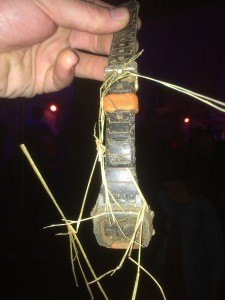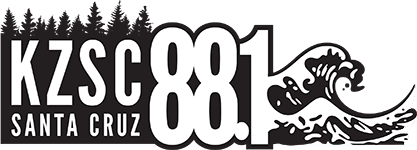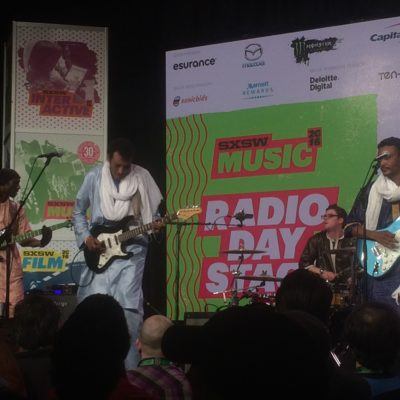
Friday’s keynote was incomparable, as the conversation between Houston legend Bun B and James Prince, founder of Rap-A-Lot Records and one of the most respected figures in the industry. Nikhil reports, that over the course of the conversation they reflected on what it means to be among the older generation of hip-hop and what their legacies each demand of them when it comes to educating the younger generations. They noted this especially in their roles as fathers and grandfathers, and reminded the audience “Keep your focus, wise men have many counselors….and when the time comes, that focus and counsel will bear fruit.” Prince shared a fascinating story of how his son Jazz Prince discovered and vouched for Drake repeatedly, and his incessant calls to Bun B and Lil Wayne on behalf of the at the time unknown Canadian. However, bearing in mind some risk tolerance, it ended up being an opportunity for everyone, which the speakers cited with emphasis to underscore the importance of leeking mentorship in everything and everyone.
Shay attended “Copyright Reform and Other Underwhelming Developments,” hosted by Jacqueline Charlesworth, Robert Lind and Tim Matso, which covered the copyright section 512: limitation on liability relating to material online. This includes takedown notices: when copyright holder (artist or label) finds that someone has used their material outside of the fair use clause, an appeal is made to the internet service provider, who transfers the message that person who has reproduced that material must take what they’ve posted. Google is on track to receive one billion takedown notices by the end of the year due to unlicensed use of copyrighted material. Will this system continue to work? With a growing number of individuals using copyrighted material, with or without maintaining fair usage, is it worth attempting to regulate copyrighted material on the internet at a federal level? We at KZSC know that it is necessary to give credit where credit is due, but given that number of online users and creators will continue, it may become difficult to regulate copyrighted material.
Ahh, T-Pain. We all remember that time he was on NPR’s Tiny Desk, but did you know that he popularized the use of auto-tune? Interviewed by Sway, T-Pain spoke about his childhood and his bumpy road to stardom. When he couldn’t afford to pay musicians to lay down simple instrumental tracks, he taught himself how to play keyboard so that he didn’t have to shell out what little money he had. Now financially stable, he’s careful to teach his kids that most people have less than they do. T-Pain definitely became more relatable during the interview, bringing up the incredibly accurate point that SpongeBob SquarePants must be, like, 45 or something, and no, he didn’t learn that through his children.
I sat in on “Social Media Campaigns for Multicultural Niches” was hosted by Carl Williams, a digital content strategist, Erin Crawford, general manager for Nielsen Music, Kathryn Hamm, publisher of GayWeddings.com, Malika Quemerais, who leads music partnerships for Facebook and Instagram, and Nate Auerbach, head of music at Tumblr. The discussion focused on developing efficient social media campaigns by keeping the desires of your audience in mind. Hamm pointed out that an artist’s authenticity is what connects them to niche communities on social platforms. Artists should do research into the communities they engage with on their social media platforms, identifying and addressing the needs of certain social niches. Social media can be a bit daunting, as there are many platforms to utilize, so it is important for creators to only use the ones they can do well, instead of spreading themselves too thin.
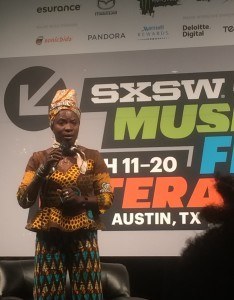 After that I attended an interview with Angelique Kidjo, who walked on stage singing powerfully. Kidjo is a Beninese born Grammy award-winning singer, actress, and UNICEF Ambassador. She was interviewed by Ann Powers of NPR Music. The discussion began with recollections from Kidjo’s past, and how she became so engaged with music. Her brother had an obsession with Jimi Hendrix. The concept of being African American was not yet understood by Kidjo, leading the nine year old to start asking questions about race, she says “History is oral. So if you don’t ask a question, you won’t know who you are.” One of the hardest parts of her life was leaving her country in exile, and not being able to speak to her parents for six years. Kidjo’s powerful life experiences are present in her charater; whether exciting or terrifying, she has found a way to find humanity and positivity in all events. Kidjo is so dramatic, hilarious, and captivating that Ann Powers adds, “there should be a movie about you.”
After that I attended an interview with Angelique Kidjo, who walked on stage singing powerfully. Kidjo is a Beninese born Grammy award-winning singer, actress, and UNICEF Ambassador. She was interviewed by Ann Powers of NPR Music. The discussion began with recollections from Kidjo’s past, and how she became so engaged with music. Her brother had an obsession with Jimi Hendrix. The concept of being African American was not yet understood by Kidjo, leading the nine year old to start asking questions about race, she says “History is oral. So if you don’t ask a question, you won’t know who you are.” One of the hardest parts of her life was leaving her country in exile, and not being able to speak to her parents for six years. Kidjo’s powerful life experiences are present in her charater; whether exciting or terrifying, she has found a way to find humanity and positivity in all events. Kidjo is so dramatic, hilarious, and captivating that Ann Powers adds, “there should be a movie about you.”
Chelsea attended “The Art of Impactful Content: Standing Out in 2016,” which talked all about how to utilize social media as an outlet to create an artist brand. As mentioned multiple times in past panels, starting with a song that is worth distributing and marketing and then thinking about who the song appeals to and what style the artist is trying to create, and the lifestyle you want your fans to connect with. Creating consistency in the message you are trying to send creates a promise to the audience, which in turn, creates the artist’s brand. For example, if you are an artist that favorites fans’ tweets, you have to keep that going to maintain your “brand.” Also touched upon was the idea that the things discussed are all America-centric, in that some people don’t have the same resources as Americans, such as having to choose between a laptop or a mobile phone due to income, and how one might choose one over the other and that’s how they would see the content. They then discussed how putting out polarizing content is impactful because you are standing for something you believe in… thus you should “create, and be judged.”
Chelsea also checked out. “Free Pizza & Beer: Promoting Your Music On Campus” highlighted ways to market yourself as a musician to the college demographic. This panel focused on creating close relationships with people in local communities, never thinking that anything’s too small to connect with. The panelists also talked about how radio is still the number one way people discover music, and college radio is the best way to spread your music to a local community because as they said, we are “music snobs” and people respect their opinions about music. Creating relationships with young people in the music industry is important because they are future people of high power.
Nikhil attended a panel including the A&R reps of RocNation, DefJam, RCA Records, and Dreamville who represent huge stars such as Jay-Z, Rihanna, J. Cole, Bryson Tiller, Jhene Aiko, and many others. A&R as they defined it was finding and curation of talent, assisting and funding the magic as much as they can. Artists are no longer as naive as they once were, so labels are able to help they reach each of their vision in a much more definitive manner than before. Moving decisively to construct and preserve your brand is pivotal to an artist’s success, for missteps are what separate those who are next up, from those who are next up to fail. For those seeking to reach the top of the charts, an A&R representative can take you there.
Later in the evening, Nikhil checked out a panel hosted by the head of Rawkus Records, Jarret Myer, and of the label’s earliest stars, Talib Kweli. They talked about the birth of Rawkus and the window of time in which they essentially dominated the hip-hop scene with the Blackstar record, as well as how they each needed to adapt to a shift in market after the onset of 50 Cent and G-Unit’s pop acclaim. The main takeaway was to pick one thing that defined what you brought to the table, and to align with that mission statement in times of difficulty. With social media, it is much easier to have your message and music heard by a diverse audience, and if that audience that you’ve connected with sense that you are authentic and consistent, you’ll never sink no matter how choppy the waters get.
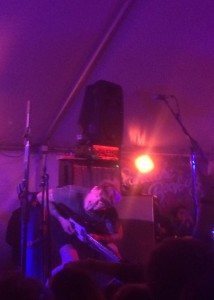 Friday Night had great music in store for us…. all of our ears are ringing. Friday featured some heavy showcases, including Bombino, The Blind Shake, La Luz, and bay area noise-monsters: Thee Oh Sees. John Dwyer, Oh Sees frontman, stomped around stage with his guitar strapped as high as his throat, looking like a tattooed velociraptor. The crowd was a little nuts. My watch broke off during the mayhem, but luckily, Chelsea found it in the mud after the show. Big ups Chelsea. And big ups Austin! I still can’t hear anything.
Friday Night had great music in store for us…. all of our ears are ringing. Friday featured some heavy showcases, including Bombino, The Blind Shake, La Luz, and bay area noise-monsters: Thee Oh Sees. John Dwyer, Oh Sees frontman, stomped around stage with his guitar strapped as high as his throat, looking like a tattooed velociraptor. The crowd was a little nuts. My watch broke off during the mayhem, but luckily, Chelsea found it in the mud after the show. Big ups Chelsea. And big ups Austin! I still can’t hear anything.
Stay tuned for coverage of the last day of SXSW Music. This was written and published by Lennon Stankavich of KZSC, with collaboration from Shay Stoklos, Nikhil Viswanathan, and Chelsea Valenzuela.
